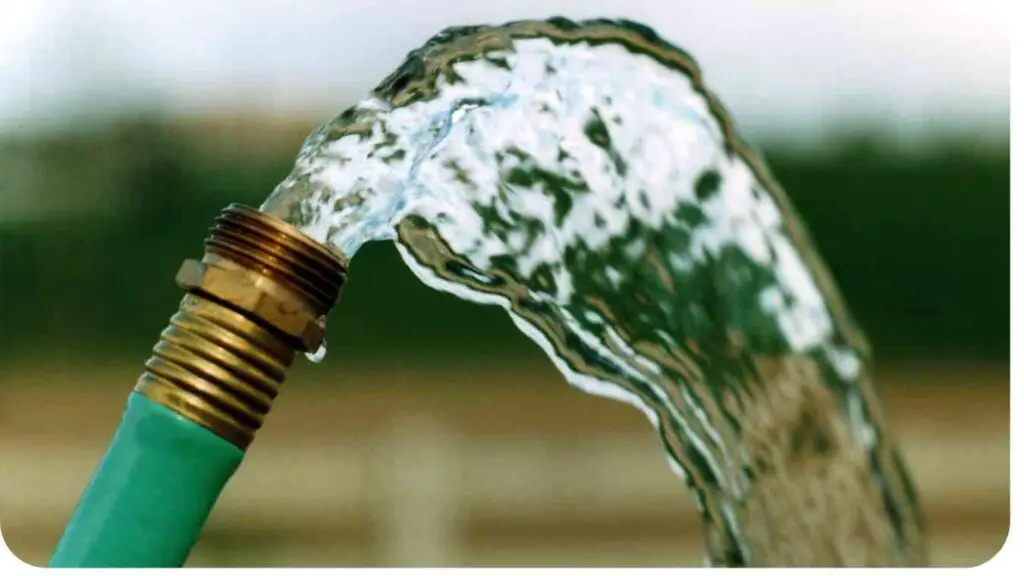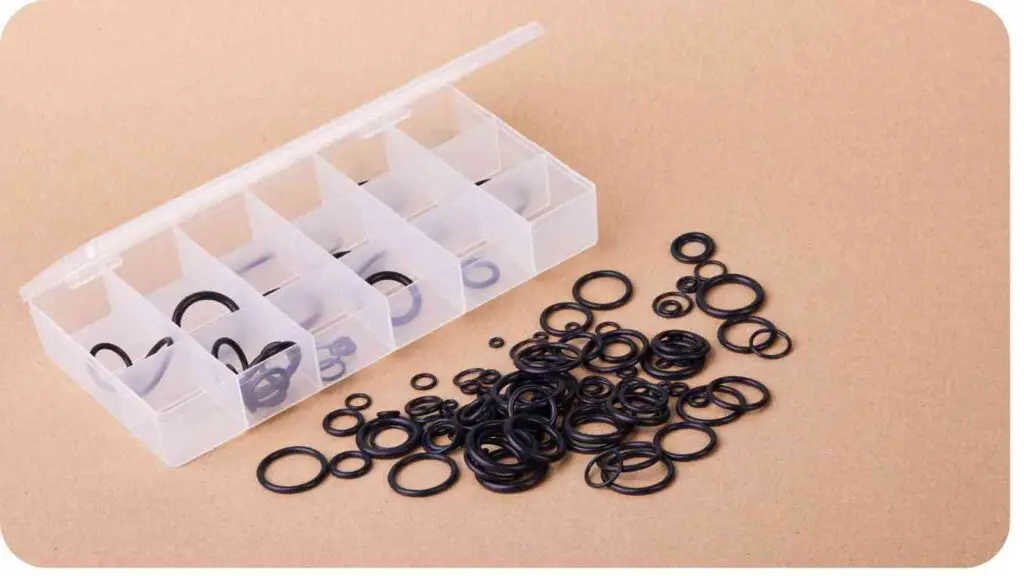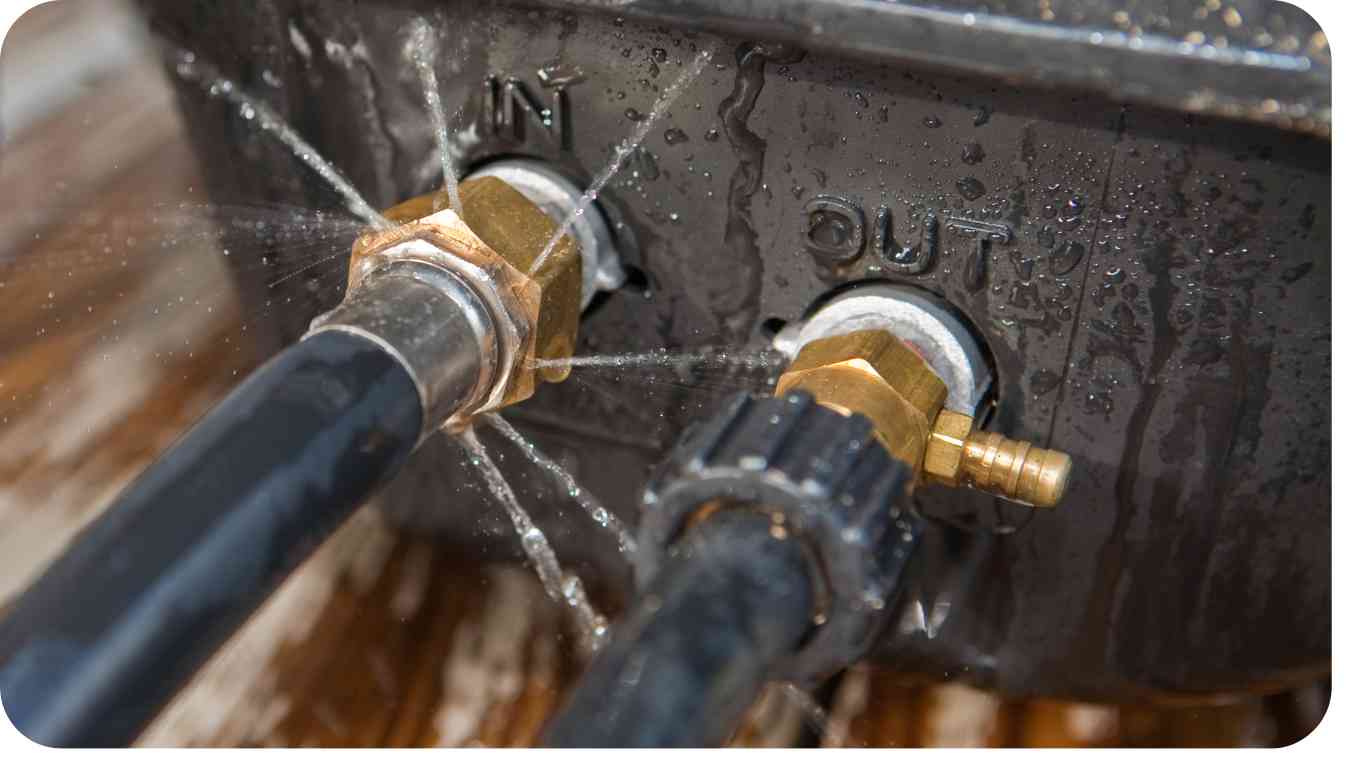Garden hoses are essential tools for outdoor watering tasks, but when leaks occur, they can be frustrating and wasteful.
In this article, we’ll explore common causes of garden hose leaks and provide troubleshooting tips specifically for Gilmour garden hoses. Whether you’re dealing with a minor drip or a significant leak, these tips will help you get your hose back in working order efficiently.
| Takeaways |
|---|
| Proper maintenance can extend the life of your hose |
| Regular inspections help identify issues early |
| Quick fixes like replacing washers can solve leaks |
| Compression menders are handy for repairing tears |
| Proper storage and winterization prevent damage |
2. Importance of Garden Hose Maintenance

Regular maintenance of your garden hose is key to preventing leaks and extending its lifespan. Neglecting maintenance can lead to issues such as cracks, tears, and damaged couplings, which can result in water wastage and increased utility costs. By incorporating simple maintenance tasks into your routine, you can ensure that your hose remains in optimal condition for years to come.
Installing a Netatmo Weather Station in your garden offers insightful data on weather conditions, aiding in the prevention of hose leaks caused by extreme weather fluctuations.
3. Common Causes of Garden Hose Leaks
Before we delve into troubleshooting, let’s identify some common causes of garden hose leaks:
| Cause | Description |
|---|---|
| Worn-out Washers | Rubber or plastic washers located in hose couplings can degrade over time, leading to leaks. |
| Hose Damage | Exposure to harsh weather conditions, sharp objects, or excessive bending can cause hose damage. |
| Crushed Couplings | Couplings at hose ends may become crushed or damaged, resulting in leaks or difficulty connecting. |
| Kinks and Twists | Kinks and twists in the hose can weaken the material and create weak spots prone to leakage. |
Understanding these common causes will help us address and resolve garden hose leaks effectively.
4. Troubleshooting Tips for Gilmour Garden Hoses
Now let’s explore some troubleshooting tips specifically tailored to Gilmour garden hoses:
Checking Hose Connections
One of the first steps in troubleshooting a leaking hose is to inspect the connections between the hose and attachments, such as nozzles or faucets. Loose or damaged connections can result in water leakage. Here’s what you can do:
| Step | Description |
|---|---|
| Inspect Hose Connections | Check for any signs of looseness or damage at the hose connections. |
| Tighten Connections | Use pliers or a wrench to tighten connections securely, ensuring a snug fit. |
| Replace Damaged Washers if Necessary | If washers are worn or damaged, replace them with new ones for a secure seal. |
Inspecting Hose for Damage
Next, thoroughly inspect the hose for any signs of damage, such as cracks, tears, or punctures. Identifying and addressing these issues early can prevent further leakage. Here’s how:
Discover why gardeners favor raised beds for optimal plant growth. Understanding the benefits can help troubleshoot issues like hose leaks, ensuring a flourishing garden environment.
| Step | Description |
|---|---|
| Visual Inspection | Carefully examine the entire length of the hose for visible damage or abnormalities. |
| Bend Test | Gently bend the hose along its length to detect any weak spots or areas of potential damage. |
| Flexibility Check | Ensure that the hose remains flexible and does not exhibit stiffness, which may indicate damage. |
Repairing Leaks with O-ring Seals

Leaking at hose connections is often due to worn-out O-ring seals. Replacing these seals can restore a tight, leak-free connection. Here’s how:
| Step | Description |
|---|---|
| Remove Old Seal | Use pliers to carefully remove the old O-ring seal from the coupling. |
| Install New Seal | Insert a new O-ring seal into the coupling, ensuring a snug fit. |
| Test for Leaks | Reconnect the hose to a water source and check for any signs of leakage at the connection. |
Using Compression Menders for Tears
Tears or punctures in the hose can be repaired using compression menders, providing a quick and effective solution. Here’s what you need to do:
| Step | Description |
|---|---|
| Cut Out Damaged Section | Use scissors or a hose cutter to remove the damaged section of the hose, creating clean cuts. |
| Apply Compression Mender | Insert the cut ends of the hose into the compression mender and twist to secure a tight seal. |
| Test Repair | Turn on the water supply and check for any leaks at the repaired section of the hose. |
Replacing Couplings for Crushed Ends
If the couplings at the ends of the hose are crushed or damaged, replacement may be necessary. Here’s how to replace them:
| Step | Description |
|---|---|
| Cut Off Damaged Coupling | Use scissors or a hose cutter to remove the damaged coupling from the end of the hose. |
| Attach New Coupling | Slide a new coupling onto the end of the hose and ensure a secure fit. |
| Tighten Connection | Use pliers to tighten the coupling securely, preventing leaks and ensuring a snug fit. |
By following these troubleshooting tips, you can effectively address leaks and restore your Gilmour garden hose to optimal functionality. Now, let’s explore preventive maintenance techniques to help prolong the lifespan of your hose.
Extend the life of your garden tools by grasping the Bosch Garden Battery’s lifespan. Proper maintenance knowledge contributes to overall garden equipment efficiency, including troubleshooting hose leaks effectively.
5. Preventive Maintenance Techniques
Preventive maintenance plays a crucial role in ensuring the longevity and performance of your Gilmour garden hose. By incorporating these techniques into your routine, you can minimize the risk of leaks and extend the lifespan of your hose:
Proper Hose Storage
Storing your garden hose correctly when not in use is essential for preventing damage and prolonging its lifespan. Here are some tips for proper hose storage:
| Technique | Description |
|---|---|
| Coil or Hang Hose Neatly | After each use, coil the hose neatly or hang it on a hose reel to prevent kinks and tangles. |
| Avoid Sharp Objects | Store the hose away from sharp objects or rough surfaces that could cause punctures or cuts. |
| Protect from Sunlight | Store the hose in a shaded area away from direct sunlight to prevent UV damage and degradation. |
Proper hose storage not only prevents damage but also makes it easier to access and use the hose when needed.
Gain insight into optimal notification intervals for OSO Technologies PlantLink systems. Effective monitoring aids in detecting potential hose leaks promptly, maintaining garden health through timely intervention and problem-solving.
Winterization Practices
In regions where temperatures drop below freezing during the winter months, proper winterization is crucial to prevent damage from freezing water. Here’s how to winterize your garden hose:
| Practice | Description |
|---|---|
| Drain and Disconnect Hose | Before the first freeze, disconnect the hose from the water source and drain any remaining water. |
| Store Indoors or in Insulated Space | If possible, store the hose indoors or in an insulated space to protect it from freezing temperatures. |
| Use Insulated Hose Bib Covers | Install insulated hose bib covers on outdoor faucets to protect them from freezing. |
Winterizing your garden hose prevents water from freezing inside the hose, which can lead to damage such as cracks or bursts.
Resolve frequent jamming issues with Fiskars Pruners using expert troubleshooting advice. A well-maintained toolset minimizes downtime, ensuring seamless garden maintenance alongside addressing hose leak concerns.
6. Conclusion
In conclusion, troubleshooting a leaking Gilmour garden hose can be simple and straightforward with the right techniques and tools. By identifying the cause of the leak and implementing appropriate troubleshooting steps, you can quickly restore your hose to optimal functionality.
Additionally, incorporating preventive maintenance techniques such as proper storage and winterization practices can help prevent future leaks and prolong the lifespan of your hose.
With these tips, you can enjoy efficient and hassle-free watering for your lawn and garden year-round. Remember to regularly inspect your hose for any signs of damage and address issues promptly to ensure continued performance. Happy gardening!
Further Reading
- Durham Master Gardeners – Garden Hose Maintenance and Repair: Explore comprehensive tips and techniques for maintaining and repairing garden hoses from the Durham Master Gardeners website.
- Gilmour – Garden Hose Repair: How-To: Learn from Gilmour’s official guide on repairing garden hoses, including step-by-step instructions and helpful tips.
- Quick Fixes to Repair a Damaged Hose: Discover quick and easy solutions for repairing damaged hoses with this insightful article from Gilmour.
FAQs
How do I prevent leaks in my garden hose?
Regular maintenance, such as checking for worn-out washers and inspecting for damage, can help prevent leaks in your garden hose.
What should I do if my hose develops a tear?
If your hose develops a tear, you can use compression menders to repair it quickly and effectively without the need for special tools.
Can I repair a crushed coupling on my hose?
Yes, you can replace a crushed coupling by cutting off the damaged part of the hose and attaching a new coupling securely.
How do I store my garden hose properly?
Proper storage involves coiling or hanging the hose neatly after each use, away from sharp objects and direct sunlight, to prevent damage and prolong its lifespan.
What steps should I take to winterize my garden hose?
To winterize your garden hose, drain any remaining water, disconnect it from the water source, and store it indoors or in an insulated space to protect it from freezing temperatures.

For 15 years, Hellen James has worked in the gardening industry as an expert and landscape designer. During her career, she has worked for a variety of businesses that specialize in landscaping and gardening from small firms to large corporations.

